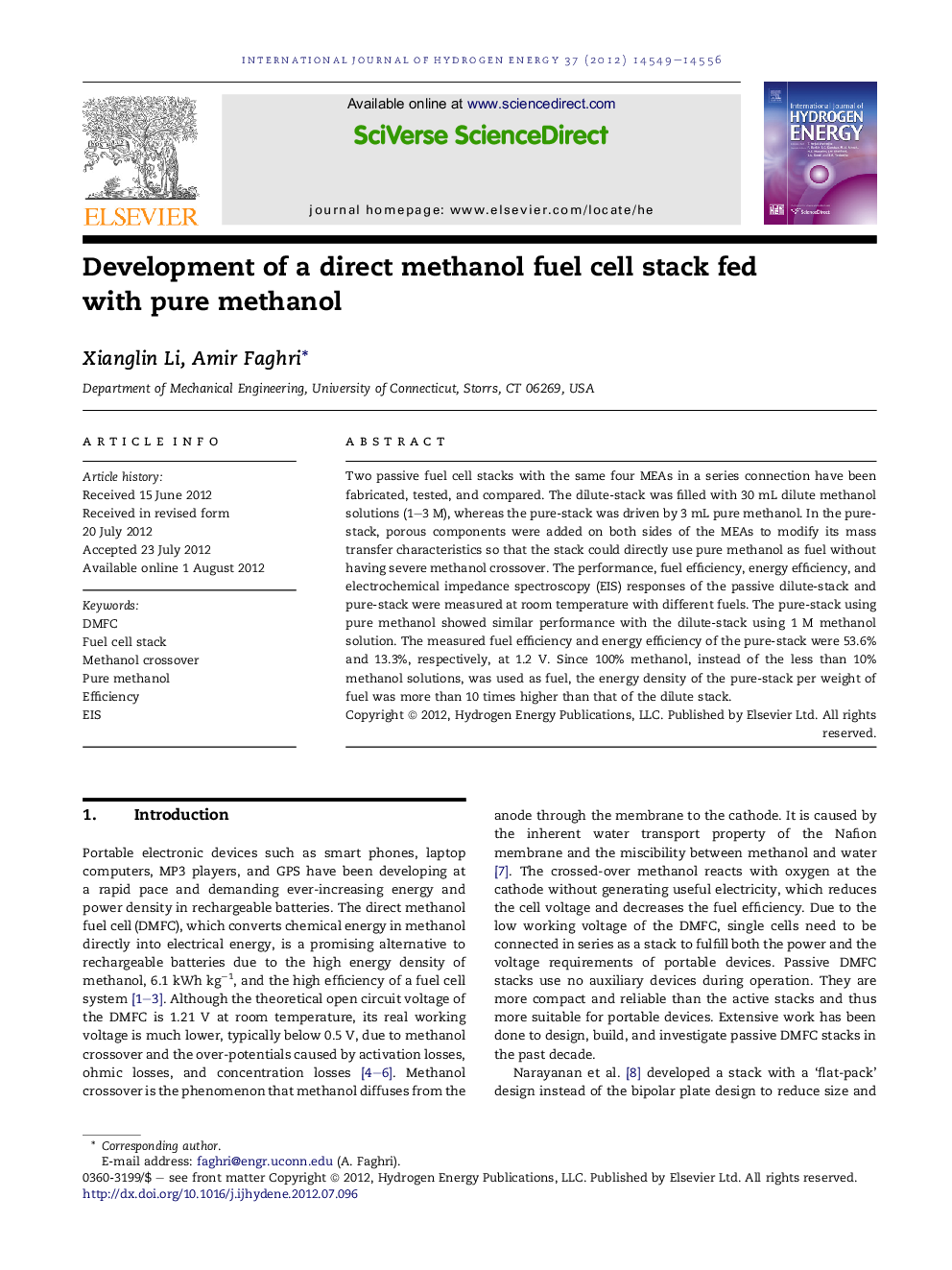| Article ID | Journal | Published Year | Pages | File Type |
|---|---|---|---|---|
| 1274803 | International Journal of Hydrogen Energy | 2012 | 8 Pages |
Two passive fuel cell stacks with the same four MEAs in a series connection have been fabricated, tested, and compared. The dilute-stack was filled with 30 mL dilute methanol solutions (1–3 M), whereas the pure-stack was driven by 3 mL pure methanol. In the pure-stack, porous components were added on both sides of the MEAs to modify its mass transfer characteristics so that the stack could directly use pure methanol as fuel without having severe methanol crossover. The performance, fuel efficiency, energy efficiency, and electrochemical impedance spectroscopy (EIS) responses of the passive dilute-stack and pure-stack were measured at room temperature with different fuels. The pure-stack using pure methanol showed similar performance with the dilute-stack using 1 M methanol solution. The measured fuel efficiency and energy efficiency of the pure-stack were 53.6% and 13.3%, respectively, at 1.2 V. Since 100% methanol, instead of the less than 10% methanol solutions, was used as fuel, the energy density of the pure-stack per weight of fuel was more than 10 times higher than that of the dilute stack.
► Two passive fuel cell stacks fed with dilute methanol solutions and pure methanol respectively have been built and tested. ► The stack using pure methanol showed a similar peak power density with the stack using 1 M methanol solution. ► The stack fed with pure methanol achieved a fuel efficiency of 53.6% and an energy efficiency of 13.3%. ► The stack using pure methanol had a high ohmic resistance due to the insufficient hydration of the electrolyte membrane.
